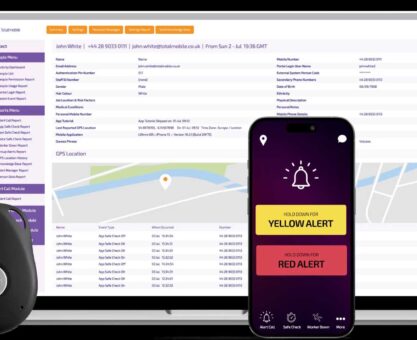Upgrading a service management system can be a challenge, but unifying and upgrading multiple systems across a continent? Here’s how Pitney Bowes approached the task…
Service management software has evolved and the benefits of moving to a modern next generation system are well documented. But what are the considerations that need to be factored in when changing systems? And what about companies that have evolved multiple systems across various regions?
One company who recently went through this process was Global Franking Machine giant Pitney Bowes as they sought to both standardise and upgrade their systems across the whole of Europe.
“We started with different service systems across Europe that had become built up across the years which that didn’t talk to each other” Andy Beer, Director of Service & Postal Market Development explained at a recent Service Community event.
Of course this is an issue for any organisation that operates across multiple divisions, with differing centres of operations. And whilst it may not be impossible, it certainly makes it harder to identify company wide trends, swiftly enough to act on them with any great effect.
“We had six or seven different systems that we had built up across Europe and in fact in the Nordics we were still using a paper based model similar to when I started with Pitney Bowes in the 80’s” continued Beer before describing the Nordic system “whereby our engineers would come into the office in the morning, go to a big rolodex and pull out their cards for the day, come back and write it all up.”
With such disparity it was clear for Pitney Bowes the direction they needed to take.
“Our number one goal was to give us one platform across Europe so we could then report on our key performance metrics, whatever that may be and do it on an international level.” Beer explained
“We looked at our existing systems and to upgrade us from the platform we were on and to add in other companies we needed, would have required and investment in a little over a million dollars, so it wasn’t a decision that we were going to take lightly. We weren’t going to just say give us the upgrade, give us version 2. We wanted something more for that.”
Quite rightly so as at level of cost whilst the right solution could lead to significant added insight into the operation of the company and ultimately large potential savings, get it wrong and it would be a costly mistake. As it turned out even this level of investment would have failed to deliver the requirements that Pitney Bowes had identified as key to their needs.
As Beer explained further “even with that investment we still wouldn’t have a web front end, which we were looking for, and we would still be beholden on either the suppliers of that system or our own internal IT department to help us write reports.”
“We felt we were looking in our rear view mirror an awful lot and it wasn’t just what was immediately behind us that we were looking for, it was sometimes looking months behind us before we could actually start to get reasonable reporting, so we definitely needed to change”
With field service experts from all quarters exalting the importance of data this was another area that Pitney Bowes were acutely aware that their current system wasn’t empowering them as much as it should be.
“Data is important but when you have tons of it and you can’t sift through it, when you can’t find an easy way to get meaning from the data, then you’re just hamstrung by it.” Beer outlined before adding further
“When I say about looking in the rear view mirror, visibility of particular production or productivity metrics were very low and it was then very difficult to manage either individual engineers, based on their metrics, or build that up into a team of engineers, or into a country, let alone build that up across a European view.”
“The pain we went through to change reports, even just to tweak things slightly” Beer recalls before pausing a moment with a wry smile. “ When your running the operation, you want to be able to see everything at a whim, you don’t want to have to be beholden to an IT group or a vendor to be able to give you something you think you might need. “
This is perhaps the fundamental difference between, the last generation of service management software and current systems. In this data driven age non-technical people are used to accessing highly customised reports with ease, and often depend on this ability to do their job.
As Beer points out “The thing is, as operational people we think we need to see an awful lot of stuff but then may stop and look at it and think ‘Do I really need that after all?’ but we need to see it first to make that call.”
Other considerations that were key for Pitney Bowes were that their new solution had to be able to integrate with Salesforce, as this was their chosen CRM and also that it to be Cloud based.
Outlining their thought process Beer added “Our existing systems wasn’t cloud based and we absolutely knew that our prime need was to move to the cloud, we didn’t want to have the hassle of owning the system, we wanted instant upgrades where available and instant fixes where available. “
“Essentially we wanted to future proof our investment.”
With the plethora of service management solutions on the market selecting finding a solution to meet their needs was always going to be possible, although dependent on a robust evaluation process. However, selecting a solution to meet these needs was one thing, implementing a solution across such a complex mix of territories another.
The approach required needed to involve all of the key stakeholders.
“We knew we were beholden to IT in our previous systems, we didn’t want to be in that position now but we also knew that they couldn’t not be involved.” Beer explains
“So we had two phases of the project, the first one was business and operations led. We picked a team of people from across Europe that came together and then spent five or six months getting really deep into what we had and what we thought we needed moving forward, and putting together a plan to get to from one to the other. Once we had that we engaged with IT”
“We wanted to the establish how we could integrate what we had into other systems, interfacing with the vendor and outlining what we saw as our business and operational requirements and then asked how readily available those were.
“We took this approach knowing that the more you fiddle around the edges of what your vendor can offer you the harder it comes to manage going forward”
Beer further expands on the practical and pragmatic approach by adding
“Nirvana is to take something off the shelf in PC World, type your code in and bang the following morning you’ve got a system, real life is not quite as beautiful as that, we know that, but the more you can avoid trying to tweak the edges of a vendors system and what it does to try and make it fit with your processes the better.”
It is through taking such a measured approach of understanding not only needs and goals but also limitations, and building the flexibility to overcome any limitations through adapting processes, that Pitney Bowes have been achieve the massive challenge of unifying disparate systems across a continent, and it is an approach worth considering for any company considering upgrading their existing system.


















